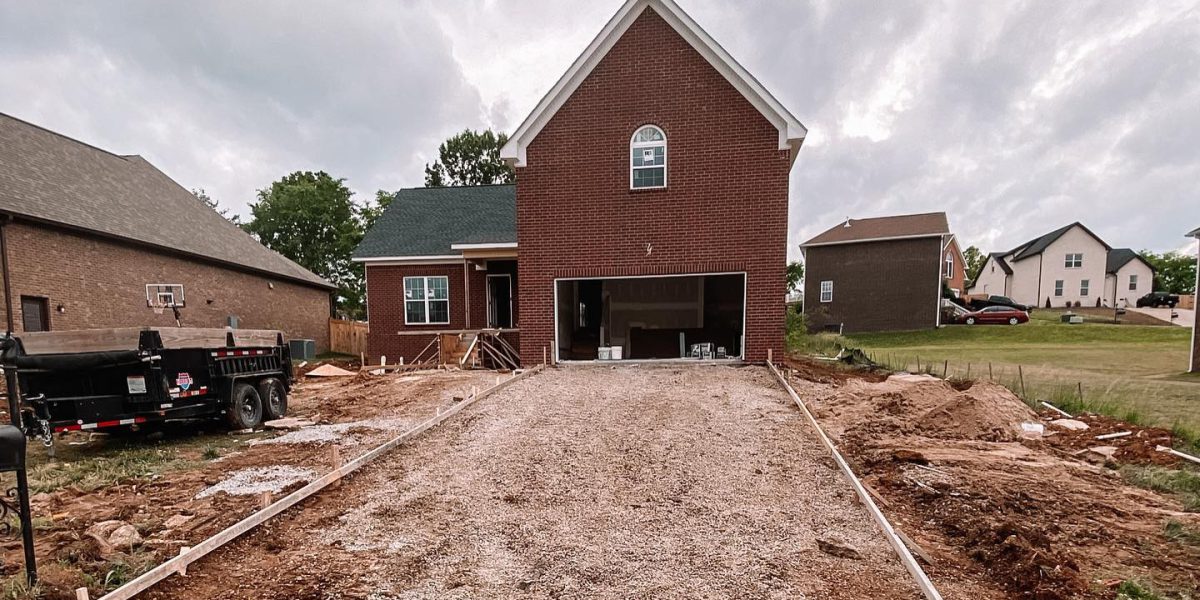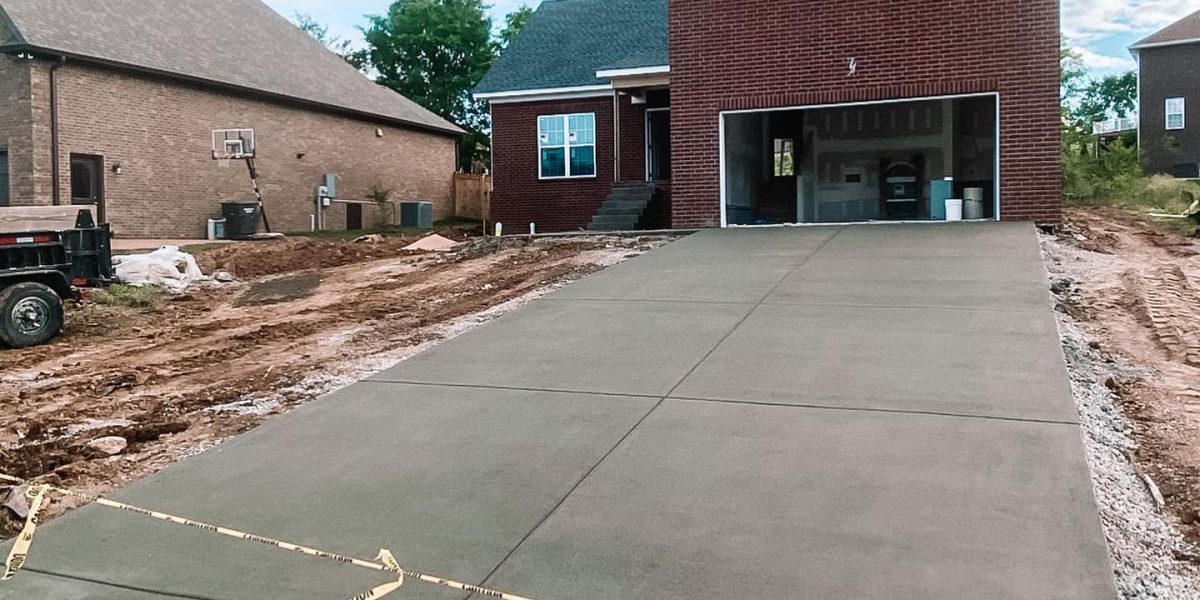Step-by-Step Guide to Resurface Your Concrete Driveway
When reviving your concrete driveway, the journey from worn-out to pristine begins with a few key steps. But what if there was a way to transform your driveway without the hassle of a complete overhaul? Imagine a process that could breathe new life into your concrete surface, making it durable and visually appealing. Curious to uncover the secrets behind this transformation? Stay tuned to learn how each step contributes to a rejuvenated driveway that stands the test of time.

Key Takeaways
- Clean and prep the concrete surface thoroughly before starting the resurfacing process.
- Identify and repair any cracks or damage on the driveway using a suitable concrete patching compound.
- Apply a bonding agent to enhance adhesion between the old and new concrete layers.
- Mix and apply the concrete resurfacer according to the manufacturer’s instructions for a smooth finish.
- Finish the resurfaced driveway with detailing, staining options, and a protective concrete sealer.
Surface Preparation
Before resurfacing your concrete driveway, thoroughly clean the surface to remove any dirt, debris, or stains. Start by using a pressure washer with a suitable detergent to cleanse the concrete thoroughly. This cleaning process is vital as it ensures proper adhesion of the new resurfacing material.
Additionally, inspect the driveway for any oil stains or stubborn spots. For oil stains, apply a degreaser and scrub with a stiff brush before rinsing.
Once the cleaning process is complete, allow the driveway to dry completely before proceeding. This step is necessary to prevent any moisture from being trapped underneath the new surface, which could lead to adhesion issues.
Next, check for any cracks or damage that may need repair before resurfacing. Remember, before applying any resurfacing material, it’s important to seal any existing cracks properly. Use a concrete patching compound to fill in any gaps and cracks, guaranteeing a smooth and even surface for the new layer. Proper tools such as a trowel or putty knife should be used for this task.
When working on your driveway, always prioritize safety. Wear protective gear such as gloves and safety goggles to prevent any injuries. Additionally, proper ventilation should be ensured when using cleaning agents or sealants to avoid any health risks.
Following these steps will help you prepare your aesthetic concrete driveway effectively for resurfacing.
Crack Repair
To effectively repair cracks in your concrete driveway before resurfacing, assess the extent of the damage and select an appropriate concrete patching compound. Before diving into the repair process, it’s pivotal to determine whether the cracks are superficial or structural, as this will dictate the repair method needed.
Here are the steps to repair cracks in your concrete driveway:
- Identify the Crack Type: Inspect the cracks closely to determine if they’re hairline cracks, larger fissures, or deep crevices, which will influence the repair approach.
- Prepare the Crack: Clean out the crack using a wire brush or high-pressure air to remove debris and loose concrete particles, ensuring a solid base for the patching material.
- Select the Patching Compound: Choose a suitable concrete patching compound based on the crack size and depth. For hairline cracks, a simple concrete sealer might suffice, whereas larger cracks may require a polymer-modified repair mortar.
- Apply the Patch: Following the manufacturer’s instructions, apply the patching compound into the crack, smoothing it out evenly and allowing it to cure properly before resurfacing.
Whether opting for DIY options or professional services, ensuring the cracks are effectively repaired using appropriate sealing techniques and preventative methods will result in a smooth and durable resurfaced concrete driveway.
Application of Bonding Agent
Clean the concrete surface thoroughly before applying the bonding agent to ensure proper adhesion for the resurfacing material.
Bonding agents offer several benefits vital to the success of the driveway resurfacing process. These benefits include enhancing the bond between the existing concrete and the new overlay, reducing the risk of delamination, and improving the overall durability and longevity of the resurfacing layer.
Follow these proper application techniques to ensure the bonding agent is applied correctly. Start by selecting a bonding agent suitable for concrete overlays and driveways. Next, mix the bonding agent according to the manufacturer’s instructions, usually diluting it with water.
Apply the bonding agent evenly using a brush or roller, making sure to cover the entire surface that will be resurfaced. Allow the bonding agent to dry to a tacky consistency before applying the concrete resurfacer.
Properly applying the bonding agent is essential for the success of the driveway resurfacing project. By following the recommended techniques, you can maximize the adhesion between the existing concrete and the new overlay, leading to a durable and long-lasting resurfaced driveway.
Concrete Resurfacer Application
Prepare the concrete resurfacer mixture according to the manufacturer’s instructions for the best application results. Once you have the mixture ready, follow these steps for a successful concrete resurfacer application:
- Mixing Guidelines: Thoroughly blend the resurfacer with water in a large bucket using a mixing paddle attached to a drill. Ensure a smooth and lump-free consistency to achieve optimal outcomes during application.
- Tools Needed: Gather essential tools such as a concrete squeegee, a long-handled squeegee, a concrete broom, and a bucket for mixing. These tools will aid in the proper spreading and finishing of the resurfacer on your driveway.
- Color Choices: Choose from a variety of color options available for concrete resurfacers to match your desired aesthetic. Whether you prefer earth tones or more vibrant hues, select a color that complements your home’s exterior.
- Drying Period: Allow sufficient time for the resurfacer to dry completely before walking or driving on it. Follow the manufacturer’s guidelines regarding drying time to achieve a durable and long-lasting finish on your driveway.

Finishing Touches
For a polished final appearance, meticulously finish the edges and corners of your newly resurfaced concrete driveway. This step ensures a smooth and professional overall look.
Once the resurfacer has dried completely, consider enhancing the aesthetic appeal of your driveway with staining options. Staining can add depth and character to the surface, making it more visually attractive. There are various staining techniques available, including acid-based stains that create unique patterns and colors, or water-based stains for a more subdued tint.
After staining, it’s essential to protect the newly resurfaced driveway by applying a sealant. Sealing techniques play a crucial role in extending the lifespan of the concrete and safeguarding it against stains, water damage, and harsh weather conditions. Choose a high-quality concrete sealer that suits your specific needs, whether you prefer a glossy finish or a more natural look.
Apply the sealer evenly across the entire surface using a roller or sprayer, ensuring complete coverage.
Resurfacing your concrete driveway is a straightforward process that can greatly improve its appearance and durability. By following the steps outlined in this guide, you can achieve a smooth and professional finish that will enhance the overall curb appeal of your property.
Remember, patience and attention to detail are key when undertaking this project. So, roll up your sleeves and get ready to breathe new life into your driveway.
